Employing Multi-Omics Analyses to Understand Changes during Kidney Development in Perinatal Interleukin-6 Animal Model
- PMID: 39404429
- PMCID: PMC11476440
- DOI: 10.3390/cells13191667
Employing Multi-Omics Analyses to Understand Changes during Kidney Development in Perinatal Interleukin-6 Animal Model
Abstract
Chronic kidney disease (CKD) is a leading cause of morbidity and mortality globally. Maternal obesity during pregnancy is linked to systemic inflammation and elevated levels of the pro-inflammatory cytokine interleukin-6 (IL-6). In our previous work, we demonstrated that increased maternal IL-6 during gestation impacts intrauterine development in mice. We hypothesized that IL-6-induced inflammation alters gene expression in the developing fetus. To test this, pregnant mice were administered IL-6 or saline during mid-gestation. Newborn mouse kidneys were analyzed using mRNA-seq, miRNA-seq and whole-genome bisulfite-seq (WGBS). A multi-omics approach was employed to quantify mRNA gene expression, miRNA expression and DNA methylation, using advanced bioinformatics and data integration techniques. Our analysis identified 19 key genes present in multiple omics datasets, regulated by epigenetics and miRNAs. We constructed a regulatory network for these genes, revealing disruptions in pathways such as Mannose type O-glycan biosynthesis, the cell cycle, apoptosis and FoxO signaling. Notably, the Atp7b gene was regulated by DNA methylation and miR-223 targeting, whereas the Man2a1 gene was controlled by DNA methylation affecting energy metabolism. These findings suggest that these genes may play a role in fetal programming, potentially leading to CKD later in life due to gestational inflammation.
Keywords: chronic kidney disease (CKD); co-expression; epigenetics; interleukin-6 (IL-6); miRNA regulation; multi-omics.
Conflict of interest statement
The authors have declared no conflicts of interest.
Figures
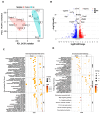
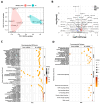
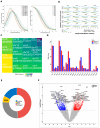
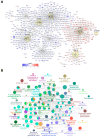
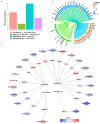
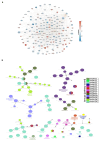
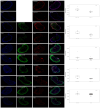
Similar articles
-
Intergenerational effects of maternal rate of body weight gain on the multi-omics hepatic profiles of bovine fetuses.Gene. 2025 Feb 5;936:149082. doi: 10.1016/j.gene.2024.149082. Epub 2024 Nov 12. Gene. 2025. PMID: 39536959
-
Constructing mRNA-meth-miRNA single-sample networks to reveal the molecular interaction patterns induced by lunar orbital stressors in rice (Oryzasativa).Plant Physiol Biochem. 2025 Feb;219:109430. doi: 10.1016/j.plaphy.2024.109430. Epub 2024 Dec 20. Plant Physiol Biochem. 2025. PMID: 39724765
-
Integrated mRNA-seq and miRNA-seq analysis reveals key transcription factors of HNF4α and KLF4 in ADPKD.Biochem Biophys Res Commun. 2024 Nov 26;735:150848. doi: 10.1016/j.bbrc.2024.150848. Epub 2024 Oct 18. Biochem Biophys Res Commun. 2024. PMID: 39432926
-
PIWIL genes in hepatocellular carcinoma: a multi-omics approach uncovering dysregulated expression and ceRNA networks in mice.BMC Genom Data. 2024 Nov 27;25(1):101. doi: 10.1186/s12863-024-01283-1. BMC Genom Data. 2024. PMID: 39604866 Free PMC article.
-
Genetic and Epigenetic Regulation of the Innate Immune Response to Gout.Immunol Invest. 2023 Apr;52(3):364-397. doi: 10.1080/08820139.2023.2168554. Epub 2023 Feb 6. Immunol Invest. 2023. PMID: 36745138 Review.
References
-
- Lee Y.Q., Lumbers E.R., Oldmeadow C., Collins C.E., Johnson V., Keogh L., Sutherland K., Gordon A., Smith R., Rae K.M., et al. The Relationship between Maternal Adiposity during Pregnancy and Fetal Kidney Development and Kidney Function in Infants: The Gomeroi Gaaynggal Study. Physiol. Rep. 2019;7:e14227. doi: 10.14814/phy2.14227. - DOI - PMC - PubMed
Publication types
MeSH terms
Substances
Grants and funding
LinkOut - more resources
Full Text Sources

